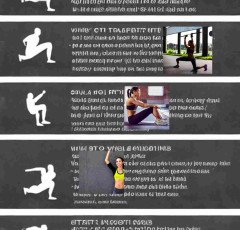In order to avoid sedentary-related health problems and to maintain general wellbeing, it is crucial to maintain good health while working at a desk.
Here are some tips for maintaining your health
Setup of an ergonomic workstation, Make sure your computer, desk, and chair are all correctly calibrated to encourage healthy posture. Your knees should be bent 90 degrees, your feet should be flat on the floor, and the monitor's top should be at eye level.
Every hour, take a brief pause to stand up, stretch, and move about. In order to avoid stiffness and poor circulation from prolonged sitting, try to move around for at least 5 minutes each hour.
Desk exercises, Include quick desk activities to help you relax and work out your muscles. To relieve stiffness, try neck rotations, sitting leg lifts, shoulder rolls, and wrist stretches.Drink plenty of water during the day and have a water bottle at your desk to stay hydrated. Drinking enough water maintains general health, enhances digestion, and keeps one's focus.Healthy Snacks, Steer clear of processed or sugary snacks. Instead, choose healthy alternatives like raw nuts, yogurt, fresh fruit, or veggie sticks. Nutritionally sound eating can increase energy and productivity. Avoid eating at your desk while working out of mindfulness. Don't have your lunch at your desk; instead, take a decent break. You may enjoy your food and avoid overeating by eating attentively.
Lighting properly
To prevent headaches and eye strain, make sure your desk has enough light. If feasible, use natural light, but if not, use warm, white, and adjustable lighting.
Care for your eyes, Use the 20-20-20 rule to keep your vision clear. To prevent eye tiredness, glance at someplace 20 feet away for 20 seconds every 20 minutes.
Mental breaks, During downtime, practice stress-relieving techniques like deep breathing exercises or meditation. This can enhance concentration and clarity while reducing stress.
Using a standing desk or a convertible desk that enables you to switch between the sitting and standing positions is something you might want to think about. Standing increases circulation and works your muscles.
Active commute
If at all possible, consider taking public transportation, cycling, or walking for your everyday commute. By doing this, you increase your daily physical activity and cut down on your sitting time.
Social interaction, Engage in team-building exercises or chat with coworkers during breaks to maintain a healthy work-life balance. The social relationships you make at work help with your overall wellbeing.
Exercises for posture, Perform planks, bridges, and back extensions on a regular basis to strengthen your back and core. Maintaining appropriate posture requires a strong core. Wear supportive, comfy shoes that provide appropriate padding to safeguard your joints and feet.
Make sure your monitor is at arm's length and that the top of the screen is either at or just below eye level. This configuration lessens eye and neck strain.
While sitting at a computer all day, you can promote greater health and wellbeing by adding these habits into your daily routine. Keep in mind that gradual modifications can have a big impact.
Make obtaining enough good sleep each night a priority. Establish a regular sleep pattern, avoid using electronics right before bed, and make sure your bedroom is cozy and restful.
Noise control
To aid with concentration and stress reduction if your workplace is noisy, think about wearing noise-canceling headphones or turning on some relaxing background music.
Schedule routine eye exams to ensure you have the right prescription for computer use and to catch any vision problems early.
Promote an active workplace culture by setting up events like walking meetings, lunchtime strolls, or group exercise sessions. Breaks for movement can refresh the body and the mind.
Create a stretching regimen to practice both before and after work. This reduces muscle tension, increases flexibility, and helps prevent injuries.
Use a stability ball
Think about replacing your chair for a portion of the day with a stability ball. Your core muscles can be activated and your posture can be improved by sitting on a stability ball.
Deep breathing exercises might help you feel less stressed and anxious. Try them out at your desk. Breathing deeply can help the body relax.
Desk cleanliness, To keep your workspace germ-free and create a healthy atmosphere, keep it clean and organized.
To set goals
Set and monitor your wellness and health objectives. Having goals aids in maintaining motivation, whether it be to drink a certain amount of water each day or to walk a certain number of steps.
Limit screen usage outside of the workplace to prevent eye strain and brain weariness. Take part in pastimes or pursuits that don't require you to fixate on a screen.
Workplace ergonomics training, To learn the right ways to sit, lift, and use your workspace safely, think about going to a workplace ergonomics training session.
Practices of mindfulness, Incorporate mindfulness techniques into your everyday routine, such as yoga or meditation. These techniques can help reduce tension and enhance all around.
Apps and reminders for good health
Use your phone's apps or reminder settings to remind you to take breaks, drink water, or practice other healthy activities.
Participate in workplace health challenges or competitions to promote wholesome behaviors among coworkers and create a supportive environment.
Consult a healthcare expert, physiotherapist, or occupational therapist if you are having any health problems as a result of your desk job for individualized advice and exercises.
Maintaining good health while working at a desk is a continuous activity. Make modest modifications that match your lifestyle while being gentle with yourself. Your general health and well-being can be significantly improved by a series of simple changes.
Caffeine and sugar consumption should be kept to a minimum because too much of either can cause energy slumps and disrupt your sleep.
Office plants
Add greenery to your work area. In addition to improving air quality and adding aesthetic value, they can help relax your mind.
Keep up with the most recent ergonomic best practices and standards to make the most of your workstation and avoid repetitive strain injuries.
Take part in step-count competitions or other fitness challenges with your employees. Friendly competitions can boost accountability and motivation.
Workplace wellness program
Take advantage of your company's workplace wellness program if it is available. Resources, training, and other activities are frequently offered by these initiatives to support employee health.
Offer your help for duties that demand physical mobility, such as delivering messages or helping with physical installations, whenever you can.
To improve the quality of your sleep, utilize the 20-20-20 rule during your breaks and refrain from using screens one hour before bed.
Set movement reminders: Use computer or smartphone reminders to remind you to move around and take breaks frequently.Work together on ongoing projects: If possible, select tasks that require you to roam around the office or to work with coworkers who are in different locations.When possible, choose to take the stairs rather than the elevator. You can improve the health of your heart by exercising by climbing stairs.Correct keyboard and mouse technique is essential to lowering the incidence of repetitive strain injuries like carpal tunnel syndrome.Consider holding meetings outside of a conference room by going for a walk. Exercise like walking can increase creativity and problem-solving skills.To stop the spread of germs, practice proper hand hygiene by regularly washing your hands and keeping hand sanitizer at your workstation.To increase productivity and lessen mental stress, refrain from multitasking and concentrate on one activity at a time.Maintain your connection to nature by making use of outdoor areas during breaks, taking a walk in a local park, or just sitting outside to take in the sunshine and fresh air.
Put mental health first
To manage stress and mental exhaustion, take breaks as needed. To refresh your mind, partake in enjoyable hobbies like reading, listening to music, or drawing.
Invest in a cozy chair cushion: If the padding in your chair is inadequate, think about buying a cushion to support your back and encourage better posture.Balance between job and personal life: Clearly define the limits between the two. Do not answer calls or respond to emails from the office after hours.
Keep up with the latest trends in health and wellness
To make decisions about your health that are well-informed, read up on the most recent scientific studies and health trends.
Set a good example, Encourage your coworkers to prioritize their health at work so that the office may be helpful and health-conscious as a whole.Find what works best for you and be consistent with your efforts because everyone's journey to good health is different. Even when working at a desk, including these healthy practices into your daily routine will improve your overall wellbeing and long-term health.Plan out your active lunch breaks by going for a walk outside rather than eating at your desk. The benefits of exercise and exposure to natural light include improved mood and increased vitality.
Use a fitness tracker or pedometer
Track your daily steps and make objectives to gradually raise your exercise level. Aim for at least 10,000 steps per day, or change the number depending on your level of fitness.
Choose a healthy mode of transportation, If you can, ride your bike or walk to work. If it's too far to walk, think about parking further away from the office or taking public transportation to increase your daily walking distance.
Use a loudspeaker or headset when talking on the phone if you spend a lot of time doing so to prevent holding the phone between your head and shoulder, which can put strain on your neck and shoulder muscles.
Encourage standing or walking meetings where suitable to promote movement during meetings. This can maintain interest among all parties and encourage a more lively and engaging dialogue.
Create computer pop-up or sticky note reminders to remind you to check your posture frequently during the day.
Beware of emotional eating and cautious of not nibbling out of boredom or stress. Find more healthy ways to handle your emotions, such taking a little walk or practicing deep breathing.Develop hobbies or activities that include physical activity away from the workplace, such as dance, athletics, gardening, or hiking.Incorporate aspects that encourage relaxation into your desk, such as soothing colors, subdued lighting, and aromatherapy (if permitted).Discover exercises that are suitable for the workplace: Try chair yoga, desk push-ups, or leg raises. You can covertly perform these exercises at your workstation.Encourage team wellness challenges by setting up competitions that focus on many facets of health, including diet, exercise, and mental well-being.Maintain a thankfulness journal at your desk and write down one thing each day that you are thankful for. Having gratitude can increase general happiness and mental health.Practice mindful eating at your desk when you're at work by taking your time with each bite and staying away from screens or other work-related distractions.Take advantage of your time off to rest up and partake in activities that enhance your physical and mental wellbeing.
Invest in a standing desk mat
If you work at a standing desk, you should think about purchasing an anti-fatigue mat to support and cushion your legs and feet.
Attend workshops or seminars on topics like stress management, diet, and fitness that are organized by your place of employment or by outside organizations.
Give your eyes regular breaks from screen time by adhering to the "20-20-20" rule and blinking frequently to prevent dry eyes.
Support a smoke-free workplace: If you or your coworkers smoke, speak up in favor of a smoke-free setting to encourage a healthy working environment for all.
Learn methods for reducing stress
To reduce stress throughout the workday, try deep breathing, gradual muscle relaxation, or guided meditation.
Adopt a growth attitude and see your journey to better health as an ongoing process of development. Be patient with failures and acknowledge minor victories.
A multifaceted strategy that considers your physical, mental, and emotional health is necessary to maintain your health while working a desk job. You may improve your long-term health and productivity by implementing these practices into your daily routine and supporting a positive workplace culture.
When possible, take the stairs instead of using an escalator or an elevator. A great method to squeeze in extra exercise during the day is to climb stairs.
Wash your hands frequently, especially before meals and after using communal workspace equipment. Maintaining good hand hygiene helps stop the transmission of diseases and germs.Create walking groups by inviting coworkers to join you for a little stroll during or after work. Walking with others promotes social interaction and makes exercising more fun.Track your progress by using fitness apps or journals to keep track of your long-term health and wellbeing. Tracking keeps you on track and sheds light on potential areas for improvement.
Keep stress-relieving items close by
To help you cope with stress and anxiety during busy or anxious times, keep stress-relieving items like stress balls, fidget spinners, or coloring books at your desk.
Eating at your desk mindfully means paying attention to the food and savoring each bite. As it can result in overeating and diminished enjoyment, avoid mindless nibbling while working.
Office challenges and contests, Convene physical fitness contests with coworkers, such step counter races or healthy recipe competitions. Friendly competition can increase camaraderie and drive.Integrate exercise breaks, During the day, schedule brief periods for exercising. These short rest periods could involve stretching, bodyweight exercises, or a quick stroll outside.Use proper lifting techniques if your profession requires you to lift things; this will protect your back and help you avoid accidents.Sit on an exercise ball, Occasional use of an exercise ball as a chair can help to strengthen your core and improve posture.Moving desk accessories, To keep your body moving while working, think about adopting active desk accessories like under-desk pedals or balance boards.Whenever you receive or make a phone call, stand up and, if you can, move around the room. This easy habit will make your day more active.Utilize your lunchtime for outside activities by going for a stroll, jogging, or practicing outdoor yoga or exercises close to your place of employment.
Positive affirmations
Make a list of affirmations that will help you be successful and stay healthy. To increase your self-confidence and preserve a positive outlook, read them frequently.
Volunteer for wellness programs, Participate in committees or events that promote wellness at your place of employment. Making a positive difference in a workplace's health may be satisfying and inspiring.Take mental breaks by engaging in hobbies: Do something you enjoy during breaks or after work. This might renew your spirit and make you feel content.If at all feasible, change the height of your desk so that you may alternate between sitting and standing throughout the day.When the weather allows, think about holding meetings outside. Natural settings and fresh air can inspire creativity and boost output.Encourage flexible work schedules, Encourage flexible work schedules that let you fit exercise into your regular schedule, including working from home occasionally.Recognize and celebrate your accomplishments in the areas of wellness and health, no matter how minor. Encouragement from others increases drive to keep making healthy decisions.
It takes all of us working together to create a good work environment.
Encourage management and your coworkers to adopt these strategies and promote a culture of wellbeing. Working at a desk while putting your health first has a big impact on your general quality of life, both personally and professionally.
Set aside time each day to disengage from electronics as part of a digital detox. Take use of this time to meditate, go on short walks, or indulge in other screen-free activities.
Create a standing meeting policy and propose putting it into effect so that meetings that last less than a predetermined amount of time are done standing up. This promotes mobility and helps meetings stay on topic.Join charity events in your neighborhood that involve walking or running by taking part in charity walks or runs. These activities encourage physical activity while advancing positive causes.Use lunchtime for exercise classes: Think about using your lunchtime for fitness classes like yoga, pilates, or dance. Many places of employment provide employees with nearby or on-site classes.Office potluck parties should be planned with an emphasis on serving nutritious food. Colleagues are encouraged to share wholesome recipes and learn about new healthy foods as a result.Sit less and move more by including movement in daily activities like standing when on the phone, talking to coworkers in person rather than through email, or taking the long way to the restroom.Advocate for workshops and resources for mental health in your workplace to address stress, anxiety, and other mental health issues.Keep an eye on your screen time after work: Be aware of your screen time after work. Avoid using computers, tablets, and cellphones excessively during your free time.
Keep up with the health benefits
Recognize the wellness initiatives, counseling services, and gym reimbursements that your employer provides.
Take charge of stretching or exercise sessions by taking the initiative to organize them during breaks or after work. This encourages a friendly and health-conscious workplace environment.Prepare balanced, healthy potluck meals with the help of your coworkers, where each person brings a different food that is full of nutrients.Keep cleaning supplies like disinfectant wipes on hand to sterilize shared workplaces, such as keyboards and mice, to lower the chance of germs spreading.Keep cleaning supplies like disinfectant wipes on hand to sterilize shared workplaces, such as keyboards and mice, to lower the chance of germs spreading.Participate in workplace wellness challenges: To promote collaboration and promote healthy behaviors, take part in workplace wellness challenges like a step challenge or a healthy recipe competition.Set hourly reminders to examine and improve your posture throughout the workday. This will encourage appropriate alignment and lower your risk of developing musculoskeletal problems.Create a supportive work atmosphere by encouraging open dialogue among coworkers about their health and wellbeing. A welcoming environment can foster a sense of belonging and motivation.Instead of wasting alone time during breaks, use that opportunity to socialize with your coworkers by having a quick talk or playing a pleasant game.
Study methods for lowering stress
Learn how to manage your stress by engaging in regular practice of methods like mindfulness meditation, deep breathing, and progressive muscle relaxation.
Balance exercises should be incorporated into your daily routine to increase stability and prevent falls. One-leg stands and other basic exercises can be performed covertly.Design a wellness bulletin board: Post advice, links, and inspirational messages about health and happiness on a wellness bulletin board in the workplace.Offer healthy snack options: To promote improved eating habits among employees, consider, if at all possible, stocking the office cupboard with healthy snack options.
Setting up a productive work schedule requires time and effort. Finding a balance between your job obligations and personal needs is crucial. You may improve your health and motivate those around you to do the same by putting these habits into practice and campaigning for a health-conscious workplace culture.

























































































 Favorite Company (Cuelinks)
Favorite Company (Cuelinks)  RPM 3.0
RPM 3.0  Hanging Lights For Living Room
Hanging Lights For Living Room  Amazon Best Selling Products
Amazon Best Selling Products  Top Rated From Amazon
Top Rated From Amazon  NordLocker
NordLocker  1150+Trendy kids coloring pages Bundle
1150+Trendy kids coloring pages Bundle  Best Phone
Best Phone  Sennheiser
Sennheiser  Healthy Ingredients
Healthy Ingredients  Pet Care Products
Pet Care Products  Online Marketing
Online Marketing  Stylish Sneakers by Red Tape
Stylish Sneakers by Red Tape  Best Robotic Vacuum Cleaners
Best Robotic Vacuum Cleaners  Artificial Intelligence
Artificial Intelligence  Essentials for Gamers
Essentials for Gamers  NordVPN
NordVPN  Smart Doorbell
Smart Doorbell  Crocs
Crocs  Bathroom Mirrors
Bathroom Mirrors  Prime Video
Prime Video  Door Handle Collection
Door Handle Collection  Kitchen Daily Use
Kitchen Daily Use  Dell Laptop
Dell Laptop  Puma (Clothing & Accessories)
Puma (Clothing & Accessories)  Wireless Bluetooth Earphones
Wireless Bluetooth Earphones  LCD Writing Tablet
LCD Writing Tablet  Unlimited access to classes on illustration, photography, design, film, music
Unlimited access to classes on illustration, photography, design, film, music  The Secret Email System
The Secret Email System  Apple iPhone
Apple iPhone  iPhone cable
iPhone cable  Samsung Mobile
Samsung Mobile  Hot Bags For Pain Relief
Hot Bags For Pain Relief  Best Selling Books
Best Selling Books  Duke T Shirts
Duke T Shirts  Men Clothing
Men Clothing  Online Technology Classes
Online Technology Classes  Wall Lamp
Wall Lamp  ASUS Laptop
ASUS Laptop  Rakhi
Rakhi  Home Decor Items
Home Decor Items  Creative Brief For Video Shoot
Creative Brief For Video Shoot  4k Projector For Home
4k Projector For Home  Women Fashion
Women Fashion  BEST SELLER TOP10
BEST SELLER TOP10  Only For The United States
Only For The United States  HP Laptop
HP Laptop  The Click Engine
The Click Engine  Smart Watches
Smart Watches  Dual USB Car Charger
Dual USB Car Charger  Echo Dot - Smart speaker with Alexa
Echo Dot - Smart speaker with Alexa  Best Home Appliances
Best Home Appliances  Motion Sensor Light
Motion Sensor Light  Realme Smart Phone
Realme Smart Phone  ELECTRONIC ACCESSORIES
ELECTRONIC ACCESSORIES  Wireless Gaming Mouse
Wireless Gaming Mouse  All Wireless Products
All Wireless Products  Unreal Engine 5 For Beginners Learn The Basics Of Virtual Production
Unreal Engine 5 For Beginners Learn The Basics Of Virtual Production  Digital Voice Recorder
Digital Voice Recorder  Acer Laptop
Acer Laptop  SOFAS
SOFAS  SEO Checklist
SEO Checklist  TitTok Revolution
TitTok Revolution  Hello Theme
Hello Theme  Air Purifier for Home
Air Purifier for Home  Kitchen Tap
Kitchen Tap  Adidas Shoes
Adidas Shoes  Graphics & Design
Graphics & Design  ASPINAL LONDON
ASPINAL LONDON  NordPass
NordPass  Wristbands
Wristbands  Best Sellers On Amazon
Best Sellers On Amazon  One World Collection
One World Collection 


















